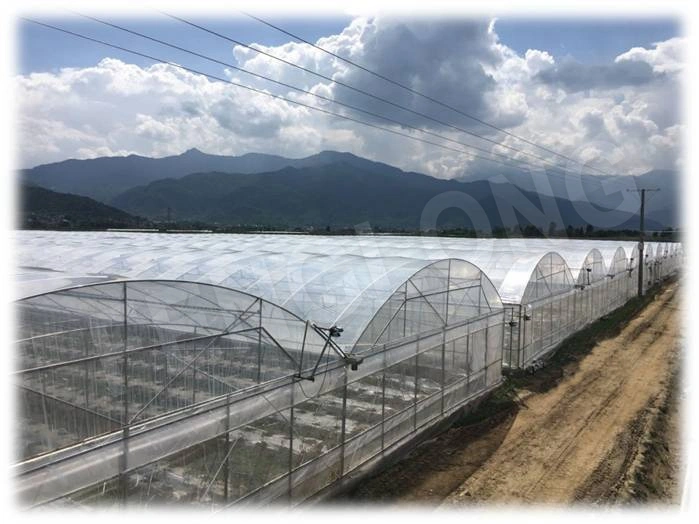industry knowledge
-

温室用ロールアップ・モーター
読む もっと読む温室用ロールアップモーターは、温室のロールアップ側面の昇降を自動化するために特別に設計された電気モーターです。ロールアップ側面は、温度と湿度の調節を助けるために空気の流れを増加させることができるため、換気のために温室で一般的に使用されています。電動ロールアップシステムは、側面の開閉を手作業で行う必要性をなくし、効率的で一貫性のある正確な換気制御手段を提供します。温室用ロールアップモーターの仕組み温室用ロールアップモーターで選ぶべき主な特徴トルクとパワー:モーターは、温室の側面全体を巻き上げるのに十分なトルクを提供する必要があります。
-

温室用フィルム施工のヒント
読む もっと読む温室用プラスチックフィルムを適切に設置することは、効果的で耐久性のある温室環境を作るために不可欠です。ここでは、ステップ・バイ・ステップのガイドをご紹介します:1 高品質の温室用フィルムを選ぶ:UV安定化ポリエチレン・プラスチックで、少なくとも6ミルの厚さのものを選びましょう。これにより、耐久性と植物の生育に十分な光透過性を確保できます。2 構造を準備する:3 フィルムを広げて配置する:4 フィルムの固定: 2)余分なフィルムを切り取る:固定後、風による損傷を防ぎ、外観をきれいに保つために、端の余分なプラスチックを切り取ります。ウィグル・ワイヤーとポリロック・チャンネルに取り付けるフィルム。4 端の壁とドアの取り付け:5 定期的なメンテナンス:
-

Choose the right plastic film for your needs
読む もっと読むSince the early 1960s when polyethylene film was first used to cover wood frame greenhouses, many improvements have been made. Most polyethylene film is manufactured as a coextrusion of three layers with different polymers and additives. Each layer contributes to the quality of the film and enhances its performance. Film lifeThe life of polyethylene film is limited due to degradation processes induced by sunlight and heat. Copolymer poly is a low-cost material that is good for one season. It is a good choice for seasonal greenhouses, overwintering structures and high tunnels. Avoid construction grade material that has less strength. Greenhouse grade poly is warranted for four years or more and […]
-

AC vs DC: Alternating Current or Direct Current – Which is Better?
読む もっと読むThe current (electric charge) only flows in one direction in case of DC (direct current). But in AC (Alternating current) electric charge changes direction periodically. Not only current but also the voltage reverses because of the change in the current flow. The AC versus DC debate personifies the War of Currents, as it is now called, in which the two giants of electric power were embroiled in the late 1890s. Thomas Edison, the proprietor of Direct Current, was so threatened by Tesla’s invention that, in order to discredit Alternating Current, he resorted to falsely misleading Americans. Apprehensive about losing his royalties to this new technology, Edison went so far as to electrocute an elephant to […]
